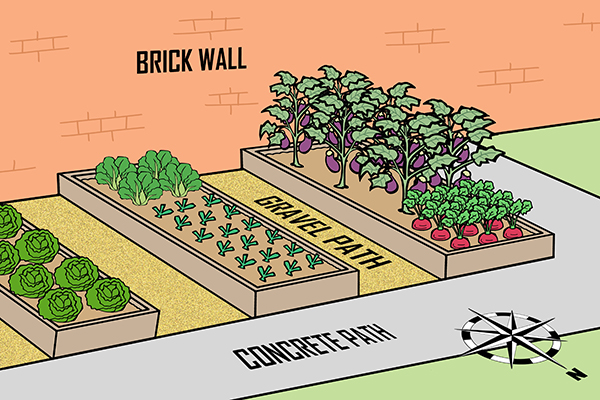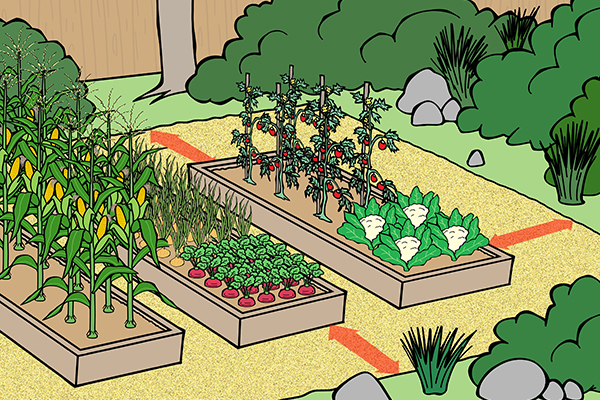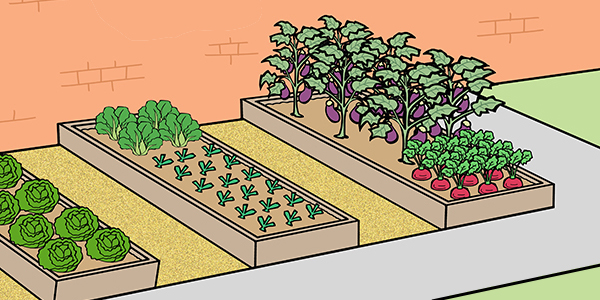This page is part of the “DETER” section of the Three Ds Pest Control program, which is a gradual three stage approach to protect vegetables from pests that is designed to minimise the use of pesticides. DETER is when you take action to deter pests from eating your vegetables. Only after deterrence methods have failed do you progress to actively killing the pest, labelled as DEFEND. For an overview of the Three Ds Pest Control program click HERE.
If possible, try not to place your vegetable patch close to anything that offers good cover for large slugs and snails. While small slugs will happily live in your vegetable patch, especially if it is heavily mulched, large slugs and snails generally have to travel to it from nearby cover to feed each night, returning to their hiding places before the light of day. This is especially so in the early Spring when there are usually no large plants in the vegetable beds to offer cover.
Shrubs, small trees, rock gardens and long grass against fences make ideal cover for such creatures. If possible, use preexisting features such as concrete paths and brick walls as borders to your vegetable patch. As well as offering little cover for large slugs and snails concrete paths and brick walls also act as heat banks, which will raise the temperature of the soil in nearby vegetable beds. Something that is especially useful in early Spring.

Brick walls and concrete paths offer ideal barriers to large slugs and snails as there is nowhere for them to hide.
Sometimes you cannot avoid placing your vegetable patch near good cover for large slugs and snails. If this is the case then consider placing a gravel pathway between you and the cover, as even this small gap will act as a deterrence.

A gravel path around a vegetable patch will act as a deterrence to large slugs and snails hiding in nearby cover.




